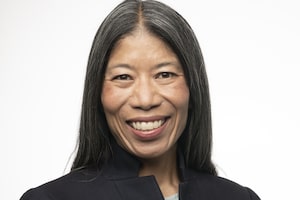Since the Oct. 7 Hamas attacks on Israel, readers have e-mailed almost daily to express concern – and, in some cases, outrage – over The Globe’s coverage of this war. Why won’t news stories use the word “terrorist” outside of quotation marks? Why were those particular photos published? How is the mix of perspectives determined, and is it the right mix?
In this space, I’ll share insight into the newsroom practices and processes that guide The Globe’s coverage, starting today with language use. On Oct. 28, I’ll address questions about photo selection, and the range of stories represented in both news coverage and Opinion.
Reporting on Prime Minister Justin Trudeau’s first public response to the Oct. 7 attack, on Oct. 10 The Globe published the word “terrorist” in quotation marks in its headline for the print edition, and carefully attributed its usage to the Prime Minister. One reader said the usage was hurtful and reads as an attempt to play down the brutality of the Hamas attacks. Another called it an attempt to create false balance. In the days that followed, others pointed out that the Canadian government has declared Hamas a “terrorist” organization – so why was The Globe demurring?
The attribution of “terrorism” across The Globe’s coverage is in keeping with the widespread practice of newsrooms around the world. Reporters and editors refer to internal guidance on covering the Israel-Hamas war, which was sent to the newsroom in a note this week. It states: “Hamas is an Islamist militant group that is committed to the destruction of Israel and is designated as a terrorist group by Canada, the U.S. and many other nations … . In our news stories, we should also describe Hamas with something along the lines of ‘which Canada considers a terrorist organization’ and/or ‘which is committed to the destruction of Israel.’”
One international example, the Paris-based Agence France-Presse, clearly eschews the use of “terrorist” in its guidance: “As a news agency, AFP’s mission is to report the facts and not attach labels.” It also states: “The reason for these style rules is that governments often brand opposition, separatist or other militant groups as terrorists, so in the interests of objectivity it is better for AFP to avoid making that value judgement.”
The rationale for such guidance is really an extension of one of the most basic tenets of journalistic reporting: Show, don’t tell. The Globe’s guidance states: “In describing the violence that has happened and is continuing to happen, use specific, vivid language that makes clear to readers the horrific nature of what is happening. There have been and will be brutal scenes of destruction and death, and we should portray to readers as best we can what is happening on the ground … . We should also attribute language used by political actors, and avoid taking a position ourselves on the intention of any attacks by sticking straight to the facts as they are on the ground and the accounts of eyewitnesses and survivors.”
The debate isn’t exclusive to the current Mideast coverage. Scott White recalls having conversations about the use of the word “terrorist” in his decade-and-a-half as editor-in-chief of The Canadian Press, a wire service whose coverage is published by multiple news organizations including The Globe. It flared up amid coverage of 9/11, when most of CP’s coverage came through the U.S. Associated Press – which did refer to the events as “terrorist attacks” outside of quotation marks. Some of the Canadian news organizations that used CP’s copy objected, and ultimately changed the usage in their own publications.
Mr. White, who founded the explanatory-journalism platform The Conversation in 2017, believes “loaded” terms such as “terrorist” can create a perception of bias, and so it’s preferable to instead use precise, descriptive words. “The term ‘Hamas gunman’ is completely accurate,” he says.
Addressing the urgent topicality of this issue earlier this week, The Conversation published an examination of the language of war reporting by Ivor Shapiro, a journalist and former long-time journalism professor at Toronto Metropolitan University. (Full disclosure: I taught alongside Mr. Shapiro as a contract lecturer.) He notes the responsible practice of journalism is akin to other “listening” jobs – consider the role of a mediator or marriage counsellor. All call for the use of “neutral language.”
However, he notes, “To those who mourn or rage in violent times, neutral language may seem performative at best – or even cruel. On both sides of the Gaza-Israel Iron Wall, wells of semantic offence rise from aquifers of generational trauma and justified fear.”
In other words, using noninflammatory language may result in readers inferring that journalists don’t see the abject suffering or injustice they’re reporting on.
You may have noticed that Opinion and Editorial Board articles in The Globe do not follow the same guidance as news articles, and that’s provided for in The Globe’s internal guidance document, which says columnists have “wider latitude in the language they use, such as using the terrorist or terrorism label to refer to attacks.” By their nature, these pieces speak to a particular perspective, much in the way a competitive debater argues one side of an issue; in all cases, the arguments are buttressed with fact.
News journalists are human, too, and the same emotions readers are feeling in the shadow of this horrific war course through the newsroom as well. There are differences of opinion. But there is also a framework that reporters and editors agree to operate within. “The style book,” Mr. White says, “offers guardrails.”
The Standards Editor column returns Oct. 28, in print and online, to look at The Globe’s practices around photo selection, as well as the range of coverage offered in news articles and Opinion pieces.
 Sandra E. Martin
Sandra E. Martin